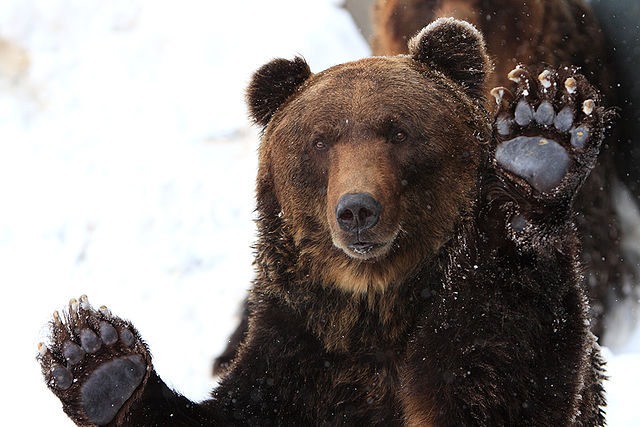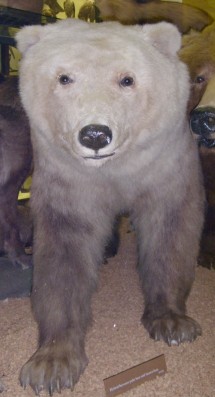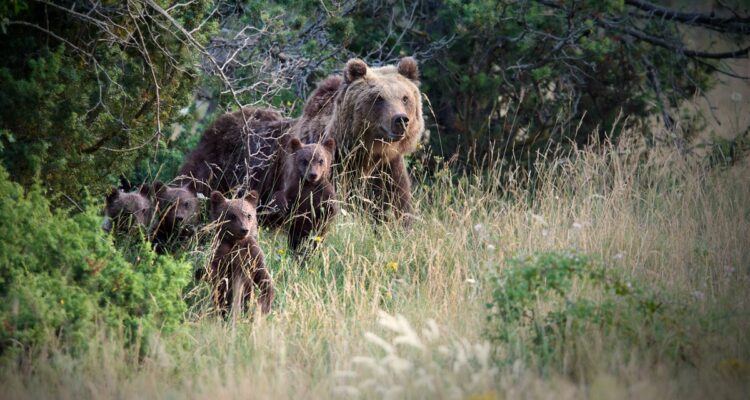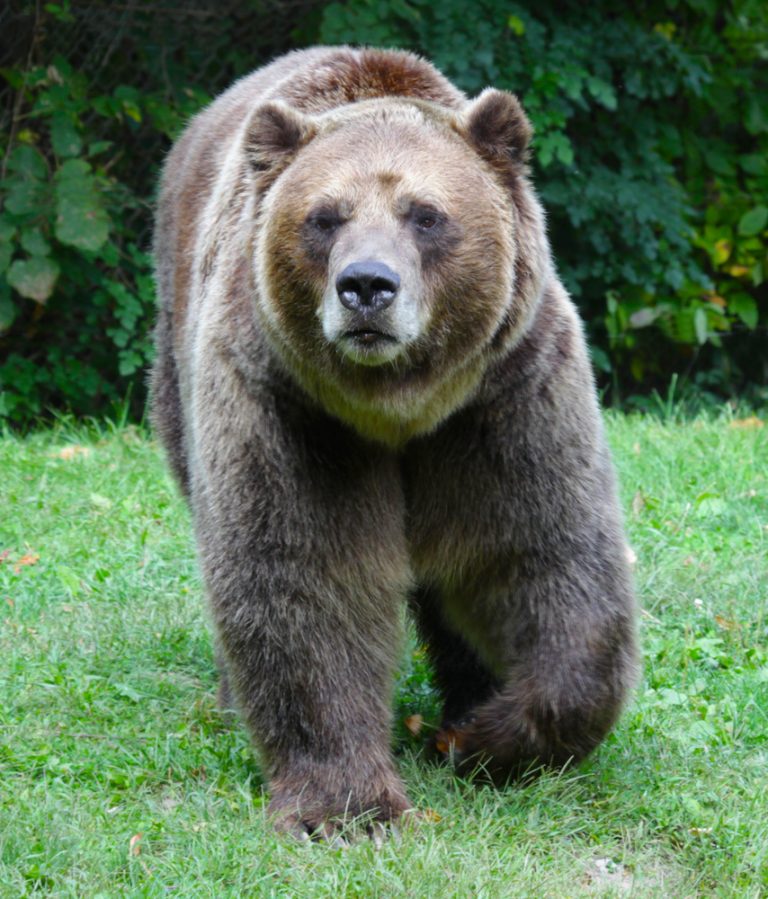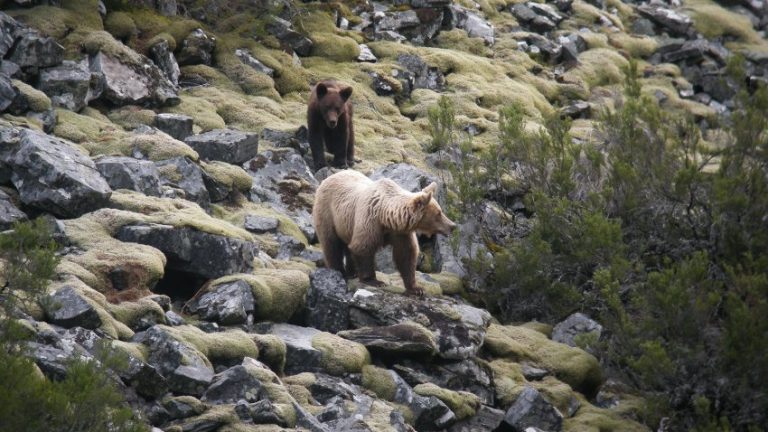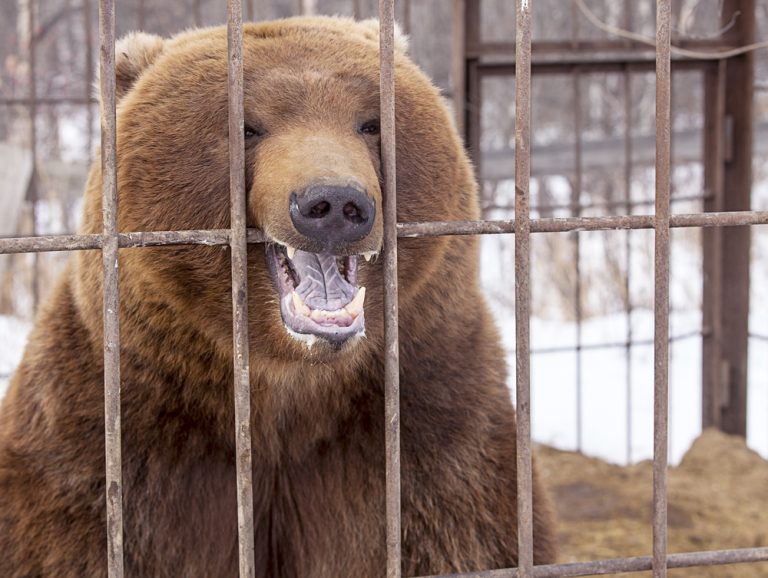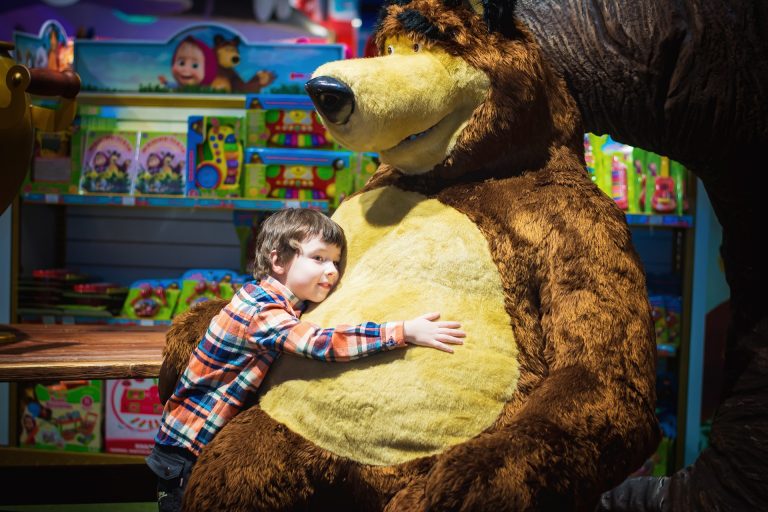Species Profile: The Brown Bear
The brown bear is the most widespread and well-known species of bear alive today.
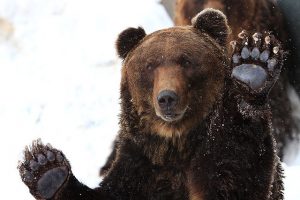
The brown bear is the most widely distributed bear species worldwide and is one of the largest land carnivores alive today. The only other bear that can rival it in size is its close relative, the polar bear.
There are many subspecies of the brown bear, and it’s generally very well-known among humans wherever they inhabit. They are so popular that they are the favorite state and national symbols and sports team mascots in many countries.
They are easily recognizable with their distinctive shoulder hump. This hump contains very strong shoulder muscles that allow them tear up roots and thick logs to find food. Despite the name ‘brown,’ their fur can be dark brown, red, reddish brown or cream colored.
Many brown bear species are now extinct largely because they were hunted and executed by humans. For instance, as was the case of the California grizzly bear.
In other areas, their population is critically endangered. In Italy, for example, it is believed that there are only about 30 to 40 of these bears alive today.
Like all other bears, brown bears can rise to stand on their hind legs and walk for short distances. They are also very intelligent and can be taught to handle tools and do many tricks. Because of these features, they perform a lot in shows at circuses, amusement parks, etc.
1) Scientific Name
Ursus arctos
2) Scientific Classification:
- Kingdom: Animalia
- Phylum: Chordata
- Class: Mammalia
- Order: Carnivora
- Family: Ursidae
- Genus: Ursus
3) Life Expectancy
Up to 25 years in the wild.
4) Average/Maximum Length
Brown bears vary tremendously in size depending on their locality, and the season of the year.
Males are generally 30 percent larger in size than females. Averagely, a brown bear will measure approximately 1.4 to 2.8 meters (4.7 to 9.2 feet) head-and-body length. Measuring from the shoulder to feet, it will measure between 70 and 153 cm (2.4 and 5 feet).
They have very short tails that measure from 6 to 22 cm (2.4 to 8.7 inches) in length.
5) Average/Maximum Weight
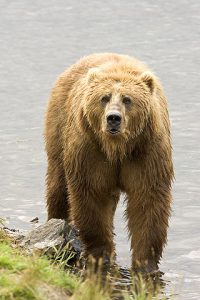
They weigh the most just before hibernation in late fall, and weigh the least in spring after hibernation.
Also, coastal bears will weigh about twice as much as interior-dwelling brown bears.
Interior brown bears can weigh as little as 180 kg (400 lbs.) for males, and 135 kg (298 lbs.) for females in spring.
The average weight from all species worldwide regardless of location is:
- Male – 217 kg (478 lbs.)
- Female – 152 kg (335 lbs.)
6) Maximum Running Speed
From 21.7 mph (35 kmph) for the largest individuals to about 15.7 mph (25 kmph) for the smaller ones.
7) Interactions With/Danger To Humans
- Interaction with humans
Brown bears will usually avoid areas where there is a large concentration of human activity. But one particular thing that keeps drawing them is the scent of human food, garbage and left-overs. If they notice that they can find food at a particular spot, they will keep coming back.
This is a common problem that causes human/bear conflicts especially in wooded areas and on camping sites.
Another source of conflict is humans encroaching on bear territory for agricultural purposes and to raise livestock. Inevitably, the bears will be attracted to the scent of the livestock and they will kill and eat them.
- Danger to humans
In North America, there are averagely two fatal bear attacks on humans per year. Adult male bears tend to be particularly aggressive. Even younger male bears generally avoid the adult male of the species.
A bear may attack because it’s wounded, surprised, curious, provoked, or defending its meal (carcass).
Female bears with their cubs are another potentially dangerous combination. They account for at least 70 percent of recorded brown bear attacks on humans.
In general young male/female bears tend to be less aggressive than the older ones.
Towards Europe, the bears native to eastern Europe are bolder and display more aggressive behavior towards humans than those in western Europe.
8) Reproduction Details
The females of the species go into oestrus (heat) once every three or four years. The scent she gives at this time will attract the male bears. As a result, it’s quite a competition among the males to breed with a willing female. They are serially monogamous and will remain with the same mate from as little as two days to two weeks.
A male brown bear will mate with as many females as it can, so also the female will mate with multiple male bears. Females can mate with two males in one day.
The mating season for brown bears is from mid-May to early July. The mating season shifts to the later months the further north the bears dwell. After the mating season, the brown bear of both gender display no sexual interest anymore.
Brown bears have delayed implantation: the fertilized egg(s) float around in the female’s uterus for six months. If the mother gains enough weight to take her through her winter sleep, the fetus will implant and the cubs are born about eight weeks later.
When a female wakes and she is not lucky enough to have cubs of her own, it’s quite distressing. Consequently, she may adopt stray cubs or if she’s large enough, she will kidnap and raise a smaller brown bear’s cubs as her own.
Care Of Brown Bear Cubs
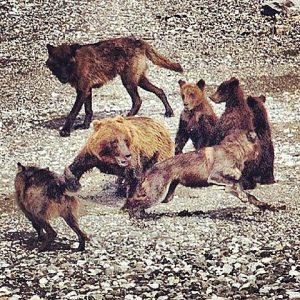
The average brown bear litter size is 1 to 3 cubs. Anything above four is rare.
The older and larger a brown bear female is, the more the number of cubs she’s likely to bear per litter. Cubs are born blind and deaf and weigh just 350 to 510 g (0.77 to 1.12 lbs.) averagely. A litter will have cubs from two or three different fathers.
Males are not involved in raising the cubs. Cubs will remain with their mothers for years (one to five years), and learn all they need to survive in the wild from her.
Infanticide:
Male brown bears practice infanticide. Thus, they target the cubs of other males. Also, they will kill cubs to make the female bear go into oestrus faster. If a female loses her cubs in this manner, she will enter oestrus within 2 or 4 days.
Cubs are trained by their mother to flee up a tree if they encounter a strange male bear. Although the mother will make a brave attempt to save them, she often loses the fight to the larger male and she may even die in the fight.
9) Diet/Hunting Pattern Of The Brown Bear
These are true omnivores and they are curious about eating anything they encounter. Their jaw is structured to consume different food types: they will eat carrion, grass, plants, fruits, berries, fish (especially salmon and trout), acorns, insects, larvae, grubs, beetles, etc.
Most brown bears are not active/aggressive predators per se. However, if there is to be a confrontation for prey, the brown bear can take on animals as fearsome as tigers, the gray wolf, and even bison.
They have been seen several times pursuing live prey halfheartedly. Instead, they will gladly let another predator kill the animal then steal the carcass.
The gray wolf in particular suffers the thieving habits of the brown bear. After the wolf has made a kill, nearby brown bears will run to it, chase the wolf away and steal the meat. They do this to tigers too.
When they do attack prey, these bears are truly fearsome. They will bite or swipe prey from behind with their powerful forearms. Their blow is powerful enough to break the necks and backs of large, hoofed mammals.
10) Alternative names
- Old Ephraim
- Moccasin Joe
- Bruin (old English)
11) Population And Conservation Status
Though the brown bear still inhabits many regions on earth, it’s now extinct in many of its original habitats. This is mainly as a result of negative human activities.
To mention just a few, some of the regions it’s now extinct include: Algeria, Denmark, Egypt, Ireland, Israel, Lithuania, Mexico, the Netherlands, Switzerland, Tunisia, the United Kingdom, the Vatican, etc.
In particular, the Californian, North African (the Atlas bear), Mexican subspecies, the Pacific Northwest brown bears were hunted to extinction in the mid-nineteenth and twentieth centuries.
Many southern Asian subspecies are critically endangered. Also, the Syrian brown bear is now very rare.
The Himalayan brown bear is one of the smallest bears in size. This bear is also critically endangered and continues to face relentless attacks from poachers that trade in its body parts.
The largest concentration of brown bears are in Russia (about 120,000), USA (about 32,500), and Canada (approximately 25,000).
12) Ancestry And History
The generalized scientific name for the brown bear Ursus arctos come from the Latin word ‘ursus’ for bear and the Greek work ‘arctos’ for bear also.
Experts believe that the brown bear most likely originated from Asia some 800,000 years back before spreading into Europe and the New World (the Americas). DNA analysis shows that the brown bear speciated from the cave bear over a million years ago.
Brown bear fossils from the Pleistocene period are often found in the British Isles.
Other theories about the ancestry of these bears is that there were possibly two separate migrations of the early brown bears. One migration is that of the inland brown bears, or grizzly bears, and this group likely came from the narrow-skulled bears that migrated from north Siberia to central Alaska and the rest of the continent.
The second group, the Kodiak bears came from the broad-skulled bears of Kamchatka, which colonized the Alaskan peninsula. On the North American continent, the two major sub-species are the coastal brown bear and the inland grizzlies.
There are hundreds of obsolete brown bear subspecies, each with its own name, and this can become confusing.
Some of the common modern sub-species of this bear are the Alaskan, European, the Himalayan snow bear, Hokkaido, Kodiak, Grizzly, Asiatic, Siberian, and Red Bear.
13) Distribution And Habitat
Though extinct in many regions, the brown bear still persists in many countries around the globe. For instance, you can find it in Afghanistan, Albania, Armenia, China, Norway, Russia, Serbia, Iran, Iraq, Japan, North Korea, and so many other countries.
In the Americas, Canada has what is likely the most stable and thriving brown bear populations today (up to 20,000). In the USA, it has lost about 98 percent of its habitat in 48 states. The majority of its numbers, 95 percent, dwell in Alaska.
Brown bears live in the most diverse types of terrain compared to any other bear species. They thrive in different environments.
Eurasian brown bears: they have adapted to wooded, semi-forest, and mountain habitats. You can find them in the Alps, pine forests, and other wooded areas. Eastern Russian forests have one of the highest numbers of brown bear populations on earth.
American brown bears: They prefer semi-open country, usually with some scattering of vegetation. Though, they will also inhabit different variety of northern temperate forest.
Ultimately, their highest concentration today remains in East Russia, Alaska, and northwestern Canada.

